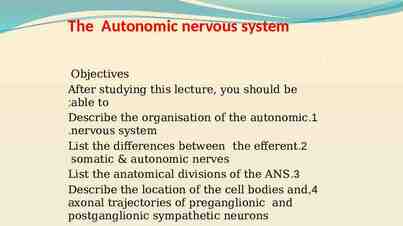The Material World in 1400 The “Biological Old Regime”,
22 Slides549.00 KB
The Material World in 1400 The “Biological Old Regime”, an overwhelmingly agricultural world where 80% of the population were peasants, people who lived on the land and were the direct producers of food for themselves and the rest of the population. The availability of land to produce food was a constant constraint on the number of people alive at any given time. Climate change had a considerable effect on population since climate affects the number of people that agriculture could support.
Population of Europe
Densely Populated Regions in 1400 1) 2) 3) 4) 5) Of the 350 million people alive in 1400, most lived on just 4.25 million sq miles (7% of total) A few highly developed civilizations existed: (with just 3 accounting for 70% of pop.) Today, 70% of people live in that same area Japan 6) India Korea 7) Islamic West Asia China 8) Europe Indonesia 9) Aztec Indochina 10) Inca
Agricultural Revolution involved the domestication of animals 10,000-9,000 B.C. (Mesopotamia & Canaan) D. of dogs 9,000-8,000 B.C. (Iran & Afghanistan) D. of goats and sheep; (Canaan) D. of emmer wheat and barley 8,000-7,000 B.C. (Peru) D. of potatoes and beans, (Indonesia) rice and (North America) pumpkins 7,000-6,000 B.C. (East Asia & China) D. of pig and water buffalo, (South Asia) chicken, (Turkey) cows, (Syria) einkorn wheat, (Turkey) macaroni, (New Guinea) sugarcane, (Indonesia) yams, bananas and coconuts, (Asia) flax, and (Mexico) maize and peppers; (Egypt) beer first made from yeast 3,000 B.C. (Iran) Breeding records of domesticated
Three major professions in 1400 Agriculturist- produce the food and the surplus Priest- explain how and why the world came to exist in the first place Ruler- protect the surplus food from invading outsiders The last two classes did not have to live near the fields and gathered artisans around them who could produce clothing, weapons, buildings, etc. - the first cities.
Warfare and Trade Cities, along with their surrounding agricultural area, were not self-sufficient. People traded with other cities for raw materials or for animals. If the required goods were strategic, the rulers tended to secure these by bringing the producing region under their control- creating the first empires. Empires are geographically large political units ruled and controlled by a single ruling elite.
Top 10 Cities in 1500 Name Population 1) Beijing, China 672,000 2) Vijayanagar, India 500,000 3) Cairo, Egypt 400,000 4) Hangzhou, China 250,000 5) Tabriz, Iran 250,000 6) Constantinople, Turkey 200,000 7) Gaur, India 200,000 8) Paris, France 185,000 9) Guangzhou, China 150,000 10) Nanjing, China 147,000
Top 10 Cities in 2010 Shanghai, China 2) Mumbai, India 3) Karachi, Pakistan 4) Delhi, India 5) Istanbul, Turkey 6) Sao Paulo, Brazil 7) Moscow, Russia 8) Seoul, Korea 9) Beijing, China 10) Jakarta, Indonesia 1) millions 13.8 13.8 13.0 12.6 12.5 11.2 10.6 10.5 10.1 9.6
Top 10 metro areas in 2010 Tokyo, Japan 2) Seoul, Korea 3) Mexico City, Mexico 4) New York City, U.S. 5) Mumbai, India 6) Jakarta, Indonesia 7) Sao Paulo, Brazil 8) Delhi, India 9) Osaka, Japan 10) Shanghai, China 1) 32.5 20.6 20.5 19.8 19.2 18.9 18.9 18.6 17.3 16.7
Nomads The Eurasian steppe is a great grassland which stretches across the continent. Since it is not amenable to agriculture, people living there has to obtain a living by hunting and gathering and following herds. Generally, these people had a peaceful and symbiotic relationship with those in the cities. However, when climate changes altered their food supply, nomads would often raid that found in the cities. The Roman and Han Chinese Empires fell, in part, due to nomadic raids.
Wildlife Humans and wildlife generally have an inverse relationship. When food supply runs short, wildlife can clash with humans (wolves in Europe, tigers in China). Human civilizations also developed a desire for wearing furs, for eating exotic dishes, as well as for hunting for sport. Wildlife populations rebounded each time the human population fell, but have been decreasing since the mid-1700s.
Population Increase “An increase in human numbers is an indication of our success in obtaining greater food energy from our ecosystem”. Additional food could be obtained in 3 ways: 1) Bringing more land under cultivation 2) Increasing the labor inputs on a field 3) Increasing the amount of water or fertilizer The first step involved human migration to new lands as well as displacing the indigenous peoples/ wildlife.
Peasants In order to live without producing food, rulers charged agriculturists taxes (as much as 1/2 of their harvest). During times of harvest short-fall, these rulers could choose to lower taxes or keep them high. Peasants would sometimes revolt if they perceived that they were being treated unfairly. Whether they did so depended on 1) the military might of the rulers and 2) the organization of peasant communities.
Peasant Revolts Japan- over 3000 instances between 1590 and 1871. China- fewer but larger-scale (mid-1600s and mid-1800s). France- French Revolution of 1789. Revolts took place in England, Germany and Italy as well.
World Trading Systems 1) 2) 3) Three interconnected subsystems of trade existed in 1400 East Asian: linked China & Southeast Asia to India (Chinese) Middle East-Mongolian: linked eastern Mediterranean to central Asia & India (Arabs) European: linked Europe to the Middle East and the Indian Ocean (Italians) Three main trade routes existed which all terminated in the eastern Mediterranean
Eurasian Trade Routes
The Bubonic Plague The trading systems served to spread more than merchandise throughout the world. In the mid- to late 1300s, the “Black Death” was spread throughout the known world. The fact that is spread so fast is an example of a historical conjuncture. Plague is caused by the bacterium Yersinia pestis. This bacteria is passed from rodents, to fleas, to humans which are bitten by the fleas.
Spread of the Plague The bacteria was endemic to burrowing rodents in southwestern China but was not originally spread to humans since the Chinese avoided the rodents. Mongol troops, however, spread the fleas into more populated parts of China, causing an epidemic in 1331. Mongol riders transmitting messages across the steppe apparently spread the plague to the rodents that lived throughout this area
Westward Bound Soon, Mongol troops who had besieged the city of Caffa (now Feodosiya, Ukrane) became ill and were forced to withdraw. Caffa was the link between the trans-Eurasian trade routes, it was the western terminus of the caravans from China as well as the eastern-most port for ships from Italy.
Plague in Europe Fleas, rats, and/or infected Italians were then transported to Italy in 1346. Europeans had begun to co-exist with the black rat, which typically lived in attics. The bacteria soon spread to this host, which spread the disease throughout Europe in a few short years. 20 million people died in Europe, as did 35 million in China (from both disease and war), with comparable numbers dead in other regions.



























